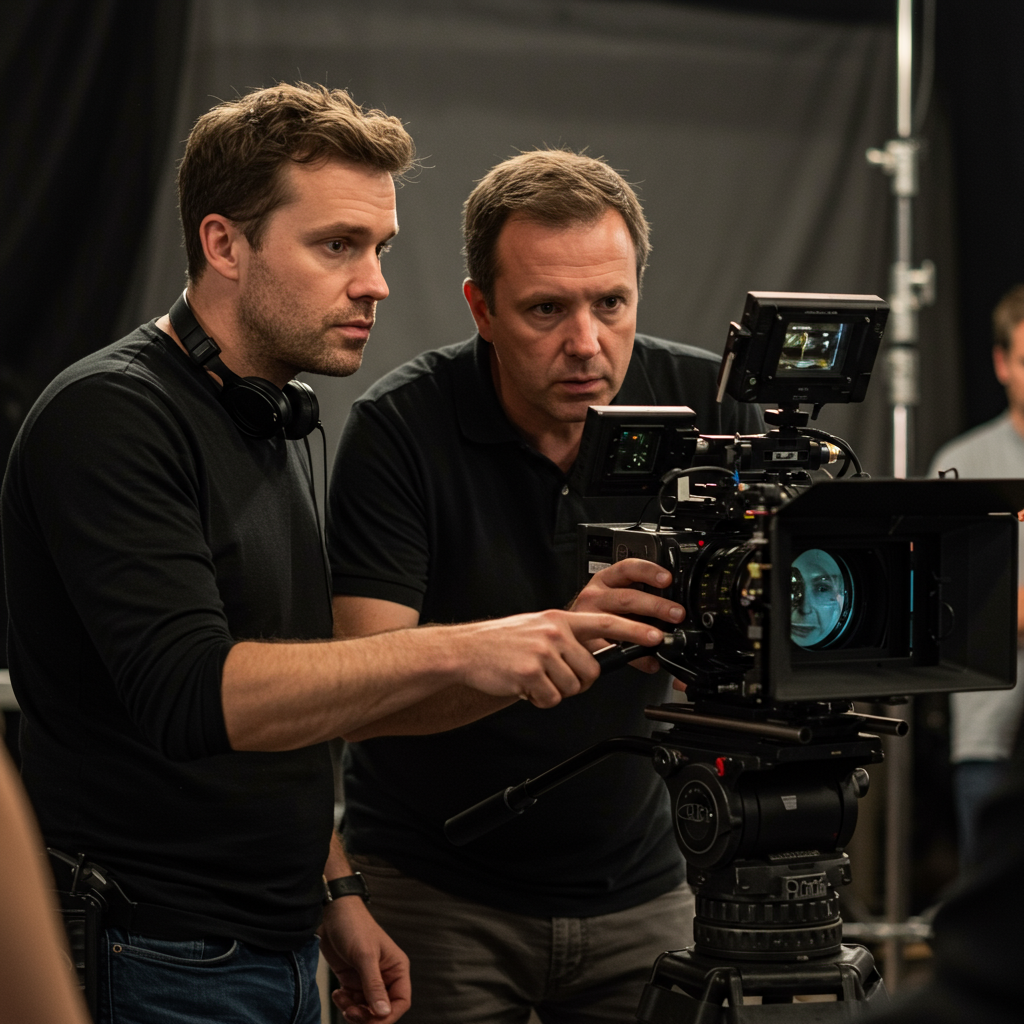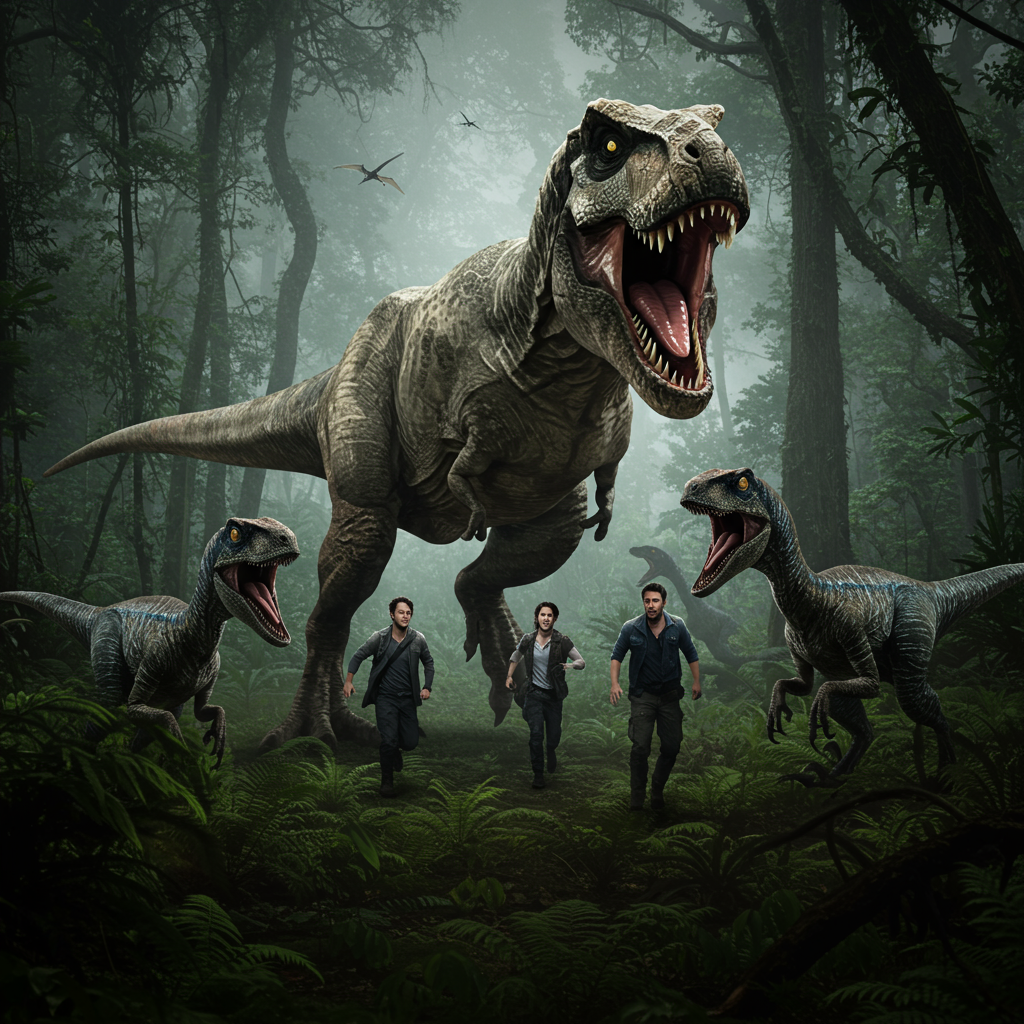When director Danny Boyle and cinematographer Anthony Dod Mantle unleashed 28 Days Later in 2002, they shocked the horror world not just with visceral rage-fueled zombies, but with their groundbreaking use of prosumer digital video cameras like the Canon XL-1. This lo-fi approach perfectly mirrored the chaotic, handheld feel of a world collapsing, becoming as iconic as the infected themselves.
Now, 23 years later, the duo is back with the highly anticipated sequel, 28 Years Later, backed by a significant $75 million budget. Yet, despite the Hollywood scale, Boyle and Mantle once again made a surprising camera choice: the iPhone 15.
Their decision wasn’t arbitrary. For Boyle, who reportedly found the raw, grainy look of the original still powerful decades later, the iPhone represents the modern-day equivalent of those accessible DV cameras. Just as people in the early 2000s might have documented an outbreak on personal camcorders, today they’d use their smartphones. This thematic link was crucial to connecting the new film technically and narratively to its predecessor across the large time gap.
Pushing the iPhone Beyond its Limits
Using an iPhone 15 Pro Max for a $75 million studio production is far from simply hitting record. While today’s iPhones offer impressive capabilities like 4K resolution and 60fps recording in professional formats like Apple ProRes with log color profiles (essential for detailed color grading), getting the desired cinematic control required immense skill and ingenuity.
Mantle, a seasoned cinematographer known for his experimental work and open-minded approach to different formats (including early digital use with Dogme 95 directors), relished the challenge. He aimed to extract something compelling from the device, something beyond traditional notions of cinematic beauty.
A major hurdle was bypassing the iPhone’s built-in consumer features:
Automatic Settings: Auto-adjustments for exposure, shutter speed, and sensitivity, designed for casual users, are restrictive for professionals needing precise control over depth of field, motion blur, and image clarity.
AI & 3D Sensing: Features like LiDAR and other AI imaging technologies, while astonishing instruments for consumers, had to be contained or deactivated to provide the stable, unmanipulated image required for the film’s extensive visual effects (expected to be between 400 and 800 effects shots). Apple even reportedly provided technical assistance, offering “wizards” from San Francisco to help Mantle’s team understand and control the iPhone’s internal processes.
Mantle highlighted Apple’s collaboration with Blackmagic and the usefulness of the Blackmagic iPhone camera app for enabling crucial manual controls, like shutter speed adjustments.
Unique Advantages and Techniques
The iPhone’s small form factor offered distinct creative possibilities:
Extreme Close-Ups: Like miniature medical cameras Mantle has used, the short distance between the iPhone’s sensor and front glass allows it to get incredibly close to subjects. This enables unique, immersive details that pull the audience into a scene.
Rigging to Actors: iPhones were rigged directly to actors playing the infected “Slow-Lows,” capturing intense, ground-level perspectives of their movements.
Actor Self-Filming: The lightweight nature and familiarity of the device meant actors could sometimes operate the camera themselves, capturing spontaneous and dynamic shots. Boyle cited a moment with Aaron Taylor-Johnson running at full speed, a shot difficult to achieve with heavier traditional camera setups that would require the actor to slow down for tracking equipment.
Portability & Minimal Footprint: The small size allowed a reduced crew presence, crucial for shooting in isolated English landscapes to make them feel untouched for 28 years. Mantle largely favored a handheld approach, avoiding steadicam to maintain a mobile spirit.
Overcoming Limitations: Professional Lenses and Wild Experiments
While the iPhone excelled at close-ups, it struggled with wide shots, zooms, and sophisticated focus control needed for complex storytelling. To bridge this gap, Mantle adapted professional cinema-quality lenses (primes, anamorphics, spherical, and zooms) to the iPhones using aluminum cages and depth-of-field adapters. While adding a large cinema lens to a slim iPhone might seem counterintuitive, it was necessary for specific shots indicated in the storyboards.
Mantle did experiment with some consumer iPhone lenses, noting Moment’s 1.33 anamorphic lens as a useful tool. However, professional glass was indispensable for much of the shoot. His wildest experiment? Attaching telescopes to an iPhone – a “nightmare to use,” but “incredibly exciting.”
“Poor Man’s Bullet Time” and Widescreen Horror
A standout innovation for capturing the film’s violent action was the “BarCam.” This custom rig held between eight and 20 iPhones simultaneously, positioned in an arc. Boyle described it as a “poor man’s bullet time,” allowing the crew to capture sweeping 180-degree views of an action sequence. This provides editors immense flexibility, enabling startling jump cuts within the action – like following an arrow entering and exiting a zombie’s head by cutting between slightly different perspectives recorded simultaneously – or utilizing the full surround view for immersive moments. Boyle finds this non-classical technique particularly effective for the visceral impact needed in horror.
Adding another layer to the visual style, the filmmakers opted for an unusually wide 2.76:1 aspect ratio, pushing beyond the standard 2.39:1 CinemaScope. Discovered late in prep when Mantle found more “real estate” could be extracted from the iPhone sensor, this ultra-widescreen format serves two purposes:
- Enhanced Horror: It forces the audience’s eyes to scan the frame, creating unease and reinforcing the idea that the threat could emerge anywhere in the vast, empty landscape.
- Epic Scale: It helps capture the beauty and scale of the untouched nature, creating a dynamic contrast between the brutality of the horror and the richness of the environment.
Not Every Shot Was an iPhone Shot
While the iPhone 15 Pro Max was the principal camera, it wasn’t used for absolutely everything.
Drone Shots: Mantle prioritized the drone pilot’s comfort and necessary maneuvers, allowing them to use their preferred equipment rather than attempting to adapt iPhones, especially crucial for capturing the untouched landscapes from above.
Special Night Vision: Achieving the distinctive reddish, infrared-like footage of zombies at night proved challenging even with the iPhone’s capabilities. Mantle resorted to using old Panasonic cameras found from rental houses to capture this specific, lower-resolution effect.
A Growing Trend on a Massive Scale
28 Years Later stands as the highest-budgeted Hollywood feature film to utilize smartphones as its primary camera, but it’s part of a growing trend. Critically acclaimed films like Sean Baker’s Tangerine (shot on iPhone 5s) and Steven Soderbergh’s Unsane and High Flying Bird (shot on iPhone 7 Plus and 8 respectively) demonstrated the viability of smartphone filmmaking on smaller scales. More recently, Apple collaborated on Stormzy’s short film Big Man using an iPhone 16 Pro prototype.
Boyle and Mantle’s return to pushing accessible technology for 28 Years Later, much like they did with 28 Days Later, highlights their commitment to innovative filmmaking and leveraging tools that can shape both the aesthetic and the narrative. The result is a $75 million horror film shot primarily on a device most people carry in their pocket, promising a unique and visceral cinematic experience.



